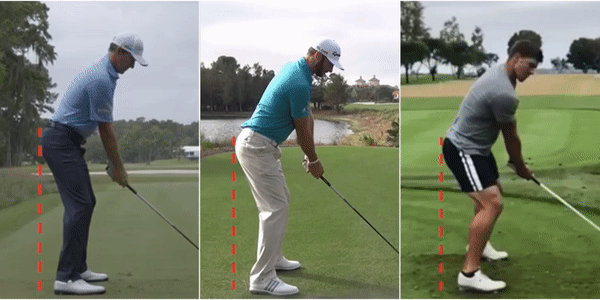
Bad golfing has serious consequences. There are many reasons why the sport is so popular, including its appeal and difficulty. It is easy to get caught up in the excitement of hitting a ball on the green, but it is a serious sport that requires a lot of dedication and hard work.
Bogey golf
Some might wonder if bogey playing is worse than bad golf. It all depends on how you see it. A bogey occurs when a golfer makes a poor shot on a hole that is generally considered easy, but is difficult for him to get over in two. If you hit a water or hazard on the approach shot, it can be a bogey.
A bogey, for most players, isn't bad golfing. It's an acceptable level of golfing for a new player. In fact, it's actually an ideal level to strive for when trying to improve your game. A bogey player should aim to improve his game.

It's actually not difficult to understand what bogey means. The term bogey was first used in the early 1900s, when par was established as the standard scoring system. Par is a score for each hole and is calculated by dividing each hole's length by its difficulty. Before this, the definition of a bogey varied depending on the club and player's ability to determine the difficulty of the hole.
Duffer golf
Most public golfers are average to poor. Their handicaps are generally in the 100s. One time, a sports reporter called these "duffers." They were not happy about this comment, but they didn't give up on the sport. They adapt to the situation and keep improving their skills.
A duffer is a golfer who plays poorly and has poor sportsmanship. Although the term can be used to describe weak players, it is more common to apply it to one golfer. The derogatory and sarcastic meaning of the term "duffer", however, is much more prevalent.
Hacker golf
The Hackers are a group made up of golfers from the Gulf South, Alabama and Georgia. Hackers are the editors of this magazine. It isn't aimed at the private club buffoons, but instead at the grass-roots golfer who doesn't mind wading through the rain with a four iron wedged up their butt. This magazine is great for anyone who loves to have a good time and enjoys golf.

Golfers are often known as "hackers" (or "duffers") by one another. Although the terms are the same, the first term has slightly negative connotations. Therefore, you may have been a hacker before, but you shouldn't let your golfing partner make fun of you. Instead, you should focus on improving your game through lessons and practice on the driving range. Golfers who aren't confident with their game are prone to the insults of others.
Three characteristics will describe a hacker’s golf game: they don’t know much about the game, don’t take lessons, or are uncompetitive. They may be unaware of the proper ways to learn the game, or they'll fall for the quick fix methods that are heavily advertised, such as specially-designed golf clubs or teaching aids. These methods promise quick improvement, but are mostly just hype.
FAQ
Is golfing dangerous?
While golf isn't considered dangerous, it can cause injuries. If you are swinging a club, for example, your arm might be broken.
However, most injuries result from falling off your golf cart.
How is golf scored?
The scorecard has four sections: Stroke, Stroke Play and Par 3. Each category is further broken into strokes. A player must complete 18 holes (Par 72) to reach par.
The lowest score wins.
What are the essential items to take on a trip to the golf course?
You should bring snacks and beverages. Remember to bring your favorite t-shirt, sunglasses, gloves and towels.
How can I learn to play the game of golf?
Golf is a skill that takes practice and time. But, you can improve your game. Here are some tips to help:
-
Regular practice is important. Golf requires constant concentration. You will not improve your skill level if you don't practice enough.
-
Play with people who play. Playing with other people will help you develop your style of play.
-
Before you start playing, make sure to read up on golf. This will give an overview of your needs.
-
Don't try and master everything at once. Focus on one aspect of the game. For example, focus on improving your putting or learning to chip. When you feel confident, you can move on to other areas of your game.
-
Take lessons. Learn from lessons how to improve your posture, swing speed, and stance.
-
Try new techniques. Try out new grips, stances or swings.
-
Keep records. Record your scores and keep track of your progress. This will help you to see the areas you need to improve.
-
Join a local golf club. There are many clubs around that offer free lessons. Many clubs offer free lessons and have helpful members who are willing to help newcomers.
-
Hire a coach. You can get guidance from a professional coach on certain areas of your game.
What does a good swing look like?
Balance is the key ingredient to a great golf swing. Balance refers to being stable and balanced through all movements of your body. Your arms should be relaxed and strong when you swing the golf club. Be sure your shoulders are straight towards the target line.
Keep your head down during the backswing. Follow through. Swing gracefully and avoid jerking the wrists. You should not forcefully hit the ball. Instead, concentrate on making smooth, fluid movements.
How often should you play golf?
It depends on your availability of time. Most people recommend at least two sessions per week.
If you're serious about improving your game, you should aim for four rounds per week.
What is the difference between a driving course and a putting-green?
Driving ranges allow players to hit balls at distances between 50 and 300 yards. For putting practice, players can use putting greens.
Statistics
- They do this by means of assessing and rating courses according to the average good score of a "bogey golfer," a player with a handicap of around 20. (en.wikipedia.org)
- They do this by means of assessing and rating courses according to the average good score of a "bogey golfer," a player with a handicap of around 20. (en.wikipedia.org)
- He shanked the first attempt, but it is estimated his second went more than 200 yards (180 m).[52]Golf courses worldwide. Below are the top 20 countries with the most golf courses as of 2019.[53]CountryNumber of (en.wikipedia.org)
- In the United States, the number of people who play golf twenty-five times or more per year decreased from 6.9 million in 2000 to 4.6 million in 2005, according to the [51] (en.wikipedia.org)
External Links
How To
How to hit the perfect Bunker Shot
A bunker shot refers to a type of shot in golf where your ball is directed at a spot on the green (the hole), and you aim for that spot so it doesn't bounce off the surface. You can take advantage of the slope on the green to do this. The goal is to direct the ball as far as possible towards hole.
Playing golf requires you to determine the best line for reaching your target. It is important to consider factors like distance to the target, terrain type, whether the ball has to bounce off of the ground or fly straight and weather conditions.
First, understand the basics of bunker shooting. You must first determine whether you are facing uphill or downward. You will need a drawing club if you are going uphill. If you're facing downhill, you'll need to swing with a fade. Next, figure out how fast your body must move in order to prevent the ball from hitting the green. This can be done using the angle between you and the ball. The final step is to measure the size of your bunker.
Once you know these things, you are ready to start swinging. As you would with any other shot, swing hard enough for the ball to go past the club head. But slow enough to keep the ball from bouncing off green. Once you've found the right speed and trajectory, you can begin your approach. Slowly approach your ball until you're close enough to the landing area. Take one more look at the ball and release it. You should have a perfect bunker shot if everything goes according to plan.